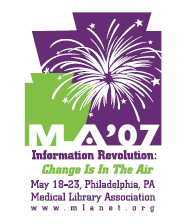An Argument in the Affirmative was given by Wayne Peay who made some excellent points about the space changes happening in libraries today. A few of my favorite comments include:
The driving idea is we are not in the paper business anymore partly because we delivered what our patrons wanted – high quality online information available 24/7.
Libraries are not about books and journals but about creating new knowledge. Our scholars have changed how they do what they do and we need to change to meet their needs.
On the other side, Rick Forsman’s argument “Super Size Me – Embracing the Edifice Complex” lobbied that libraries are not one dimensional; we house resources, offer services, and inspire our users.
He also noted that learning and work are influenced by the physical space. The physical structure gives many messages and the building is a springboard to the future. If the Library goes away – is it any wonder our users think Google has all the answers?
Furthermore, he argued that given society’s horrible record of estimating the impact of technology (recalling that TV was going to kill Radio), should we just give up? Well, obvious that answer would be NO!
A few of the rebuttals:
- Ah, the romance of paper and those clay tablets were pretty sweet too.
- Technology over time -- will we be able to read what is digital today?
- What is the mission or focus of the institution? The library needs to fit into it.
- Hedging our bets versus trying to go back.
Mr. Forsman's Summary (in a nutshell):
The library is symbolic to all sorts of things association with learning. Libraries need to re-purpose their space and be in control of that change. The libraries role is to help with knowledge management not warehouse management.
Mr. Peay's Summary (in a nutshell):
The perception of the library is “paper” and we need to change that. Look at the space – how do we redefine ourselves? As we do that, there is a huge opportunity.
By show of hands, the “winner” of the debate was the self-described “cowboy in white” - Rick Forsman.
But wait, that's not all ...
MJ Tooey provided the pragmatic voice with Who Cares about Space & Books - What's in it for Me? in which she presented recent changes in her library and choices she made to maintain some control regarding those changes. She noted that, “the container [the building] remains the same – the content has changed” as the university co-opted some library space for student services. The ability to “not be defined by the container” has brought some great benefits to the library.
Jane Bridges explored Space – the final frontier? Even in hospitals, there are needs for work space and social space along with the virtual space. Her dream library description is a "welcoming location where digital, human, and social resources are organized in support of learning, technology, group gathering space, and provides a continuum of service."
Worth a listen if you have the conference CD (or can borrow it from a friend).

